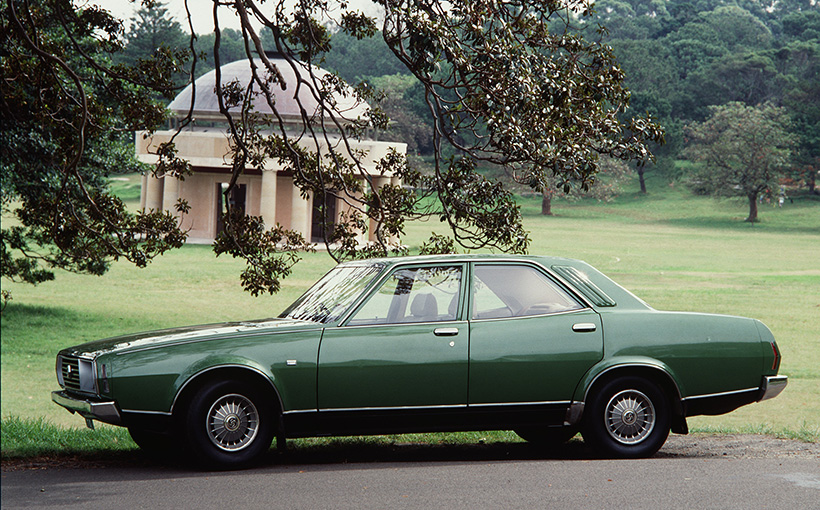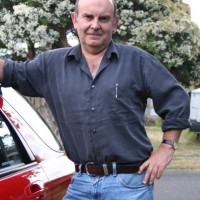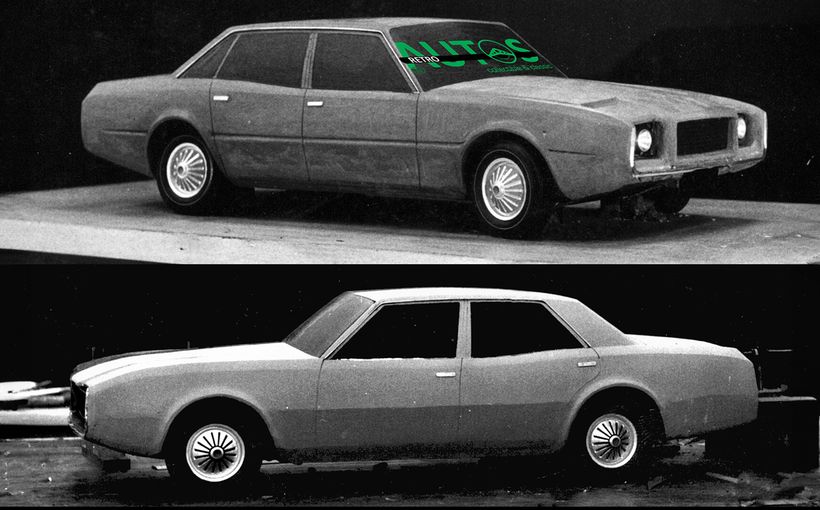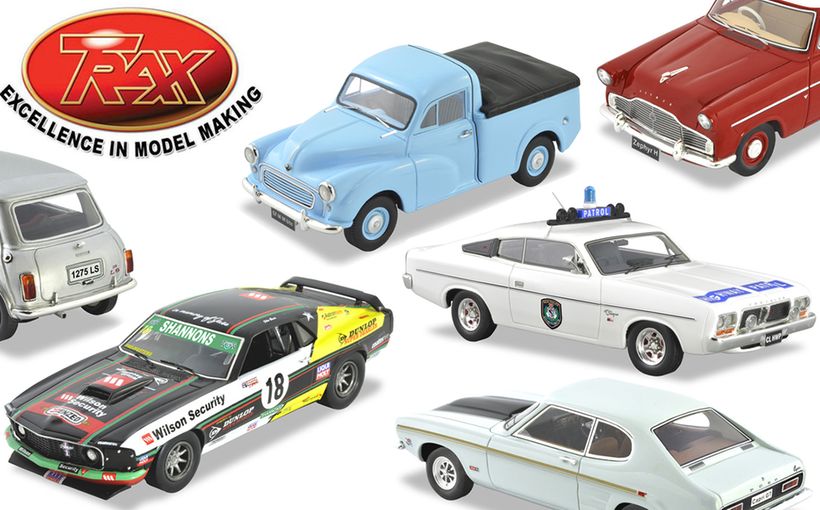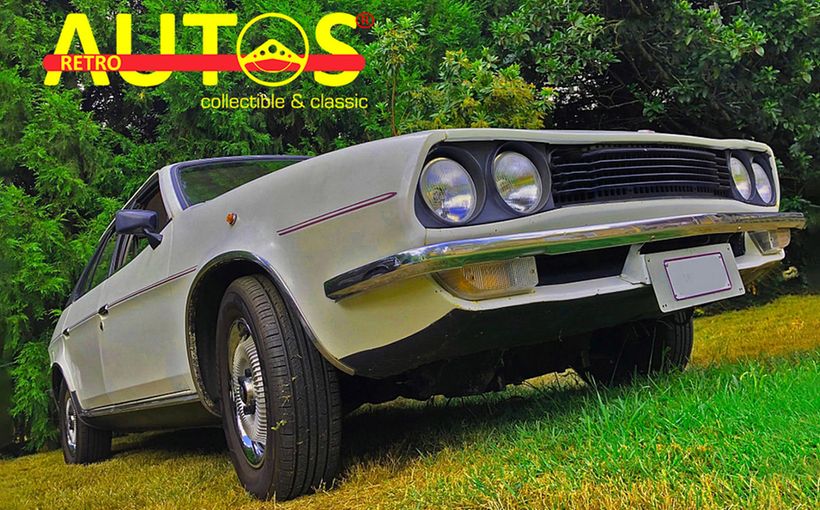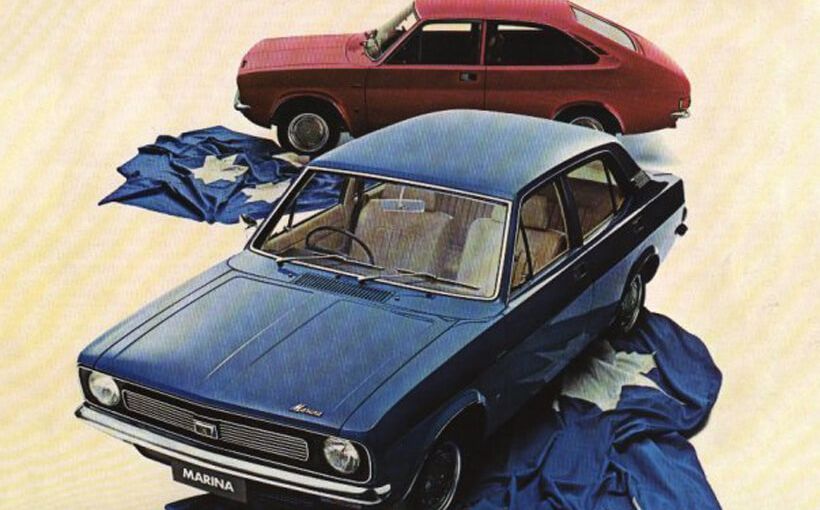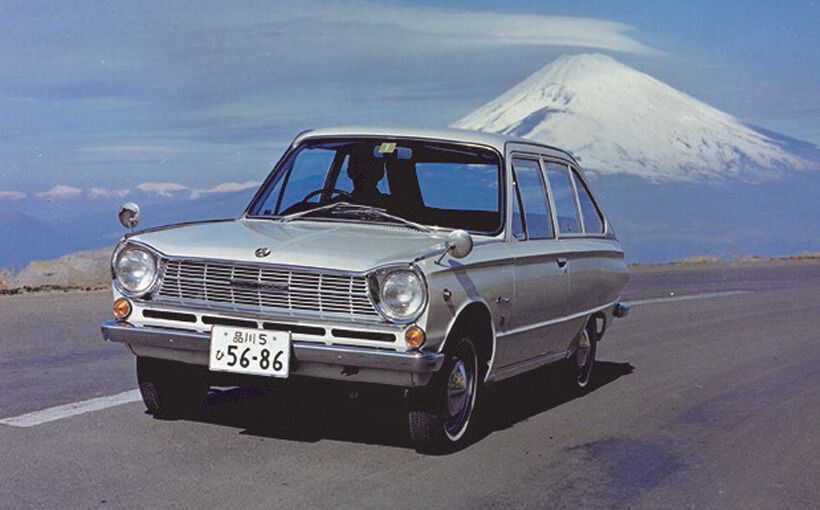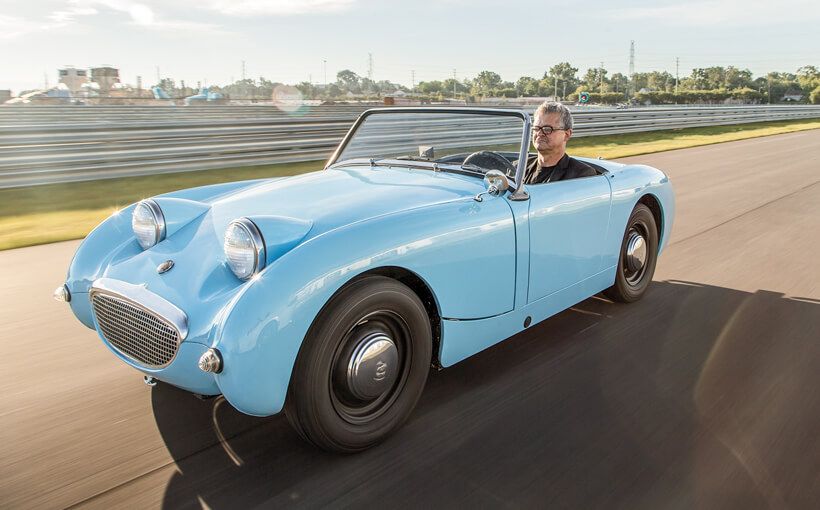1973-74 Leyland P76: The Scapegoat for a Rudderless Nation

The loss of Australia’s car industry has many parallels with the loss of the P76 and may in fact be more closely connected than many realise. Since its June 1973 announcement and Leyland’s October 1974 local closure, the Leyland P76 has been a stone trapped in the national shoe. The P76 story is like an ongoing family dispute fanned by name-calling and blame as facts about the car itself have become irrelevant. Despite the efforts of those who know nothing about cars and still condemn it as a lemon, the Leyland P76 won’t go away.
Today’s industry closures can be traced directly back to Australia’s inability to deal with what was lost with the P76. To not look at the context of the P76’s demise would be doing former Leyland Australia staff and workers an injustice. The car as an end product was accurately and favourably assessed. This was comprehensively documented in the media when such things mattered: when it was new. Australians rushed to buy the P76 on release and as soon as word came through that Leyland was shutting its local facilities, there was another rush to buy what was left. The P76 reached an almost miraculous 17,000 total sales, a fraction of what it would have sold had Leyland been given a chance of meeting demand.

The P76 was surrounded by “anything but average” political and community behavior.
It was launched during an era of the unthinkable. Barely three years before the P76 arrived, Australians were jailing their youth for not wanting to be part of the Vietnam war. By 1973, just as many Australians were jeering those young Australians who believed they were acting in the nation’s interest by fighting and enduring this tough and cruel war at great personal cost.
Without reducing the experience of Australia’s Vietnam veterans to that of the workers and management of Leyland Australia, there are some disturbing parallels. The Vietnam veterans came home after losing an unsustainable war, the P76 was ridiculed and by association, its competent and hard-working creators devalued, after losing an unsustainable contest.
It remains significant in both cases that Australians attacked those who had the least say and suffered most in the final wash-up. Even worse, those who established the rules of engagement and joined the scapegoating that followed have not always faced the same scrutiny. There are parallels in today’s industry’s closures.
In both cases, the Australian efforts were dissipated, even undermined, by those calling the shots. In the Vietnam war, there were fundamental differences between the American and Australian way of doing things. There were even differences in why both nations were there in the first place.
The implosion of the British class and labour system occurring at the same time resonated so strongly with certain Australian politicians and unions that the fate of the P76 (along with the wider car industry and those whose livelihoods depended on it) appeared to be of little or no concern.

It is significant that Australia’s two northern lighthouses of political and cultural direction, Britain and the US, were both facing major internal strife. Australia had yet to formulate its own position on a wide range of issues to prevent it from being sucked into the vested interests undermining both nations.

Australian politicians freely volunteered troops to Vietnam that were not asked for. Instead of protecting the P76 and what it brought to the nation, Australian politicians not only linked themselves to the unions and British class war which hastened its demise, in several notable cases, they added ammunition.
Rather than take another gratuitous look at the car, several new books and interviews including Gavin Farmer’s “Leyland P76 – anything but average” have revealed new aspects to the P76 story.

P76 Development
- After several attempts to improve British products for the Australian market, BLMC Australia, as it was known after May 1968, began an exhaustive study to narrow down the configuration for its first all Australian mainstream family car range. The ex-GM Rover V8 that came with the merger between BMC and Leyland had already been approved for Australian production by late 1968. Discussions were underway with Repco following its involvement with the Repco-Brabham racing version of the same engine.
-
After a front drive Austin 1800 V8 had been built and rejected, rear drive benchmarks like the Peugeot 404 had convinced the company to focus its efforts on two new rear drive Australian family car entries in medium and larger sizes. Similar to what Holden had in mind for the HQ Holden and LH Torana, the new Leyland models would offer extra refinement and quality while sharing key parts, styling themes and production processes.

-
Because the coming British Marina program was so close to the parameters of the smaller Australian Leyland proposal, the Marina replaced it. As Ford found with the local Cortina and Holden with the later Commodore, this brought more dramas and long term costs than a new local design.
-
The Marina also locked Leyland Australia into the E-series four and six cylinder engines which were neither suitable nor good enough for the local application as the original plans called for a small V6 version of the aluminium V8. Precious funds and factory resources that should have been allocated to the P76 at a critical stage were diverted to rectify yet another poor British design and upgrade these engines with limited success, neither of which had any long term prospects.

-
Mindful that BMC had already carved out a consistent and steady niche for a more compact, better equipped alternative to the Big Three Holden, Falcon and Valiant, Leyland Australia decided to continue this positioning for the larger car. The original Australian P76 proposal was NOT for another local model based on the 1966 US Falcon’s 111in/2819mm wheelbase, 184.3in/4681mm length, 73.2 in/ 1,859 mm width and front and rear tracks of 58.0in/1473mm. These dimensions had already defined the 1968 Holden HK series and would define the local Valiant by 1971. Leyland’s Australian management believed from the outset that its traditional private buyers did not need a fourth variation of this formula and would welcome a slightly smaller, more sophisticated alternative. Yet these dimensions would play a critical role until the end.
-
At a crucial point late in 1969, a former US Ford staffer who had moved to British Leyland had the power to insist that the P76 had to match the Big Three Australian cars in dimensions. The P76 therefore emerged 8 in/203.2mm longer than intended on a wheelbase that had been lengthened by an inch to the 1966 Falcon’s 111in/2819mm. This punched the P76 out to being the equal longest in class with the VH/VJ Valiant and wider than any of its rivals when there were signs (LC Torana) that not everyone needed such a big car.
-
No longer able to set its own agenda as a compact alternative for private buyers, the P76 was now the biggest of its kind with three direct rivals competing for fleet sales. Leyland then had to demonstrate its extra size delivered extra capacity hence the oversized boot while maximising cabin space. This in turn dictated longer overhangs front and rear which the separate body additions at each end highlighted.

-
The extra size dictated the hasty local stretch of the Tasman/Kimberley’s E-series six from 2.2-litres to 2.6-litres with resulting reliability problems. Although an efficient 2.6-litre overhead cam six should have been a standalone P76 feature, its all cast iron construction and lack of a cross-flow head ensured it was little better than a comparable pushrod engine. The V8 was expanded from a proposed 4.2 to 4.4-litres. This made it a desirable engine choice for niche private buyers except the P76 was now competing for volume sales in a six cylinder fleet market against a bigger Holden 3.3-litre engine and new over 4.0-litre sixes in the Falcon and Valiant. Even so, the P76 2.6-litre was still more than adequate given the P76’s lighter body. By 1974, it was the perfect size for a more fuel-conscious market until the reliability issues created the impression that it was too small and failing under the strain.
-
Because Leyland’s Sydney base had never needed the facilities to engineer a new platform from scratch, British sources confirm “much of the development of the P76 took place in the UK (over in Abingdon, mainly), and although a different area of BLMC would be responsible for chassis tuning and the like, Roy Brocklehurst of MG fame set-up the chassis in his last major assignment for the company.” For a brand new unitary structure, the P76 was outstandingly strong and light reflecting the experience of the team behind one of the world’s first and most enduring monocoque open cars, the MGB. In the absence of any clear proposals for the exterior, this new floorpan was hidden under several Holden bodies to allow extensive real road outback development to continue. However, this approach later dictated what could and couldn’t be done in a styling context.

-
It was bizarre that Rover, which was by now within Leyland, was developing its new P8 to almost identical dimensions in 1969. Leyland then dropped it when it was finished and tooled, way ahead of the P76. The question is often asked whether Rover P8 internal pressings became the P76’s internal structure but there is no evidence of that. The P8 shared the unusual construction of the Rover P6/Citroen DS19 which featured a free-standing monocoque structure clad with bolt-on panels. Either way, there was an abandoned Rover model, as least as good as the P76 and closer to what the Australians wanted in size, ready for production. It also had far more money spent on it and was built around the same drivetrain and could have easily been tweaked for local application.
-
Even more bizarre was that the P76 wasn’t seen as a potential export replacement or a joint development of the Rover P8. As a result, the Australians were never given the opportunity or the extra funds to generate a larger Rover sedan that Rover desperately needed. This would also have solved the lack of identity that Leyland had as a car brand in Australia.

-
The most common explanation given for this corporate negligence (British tax payer money was going down the gurgler at an amazing rate with nothing to show for it) was the P76 was seen as a foreign project within British Leyland and not owned by any of its warring and disparate divisions. It would also have been seen as an outside threat by British unions and management protecting their turf. The P76 was given a miserly $21 million development fund (about 30 per cent of what it needed) for no other reason than this was what was required to maintain an entry in Australia’s heavily protected market. Like other local manufacturers, it was not about developing Australian capabilities and exporting a vital new model needed in other markets but the most expedient way of maintaining a local presence within local rules.

-
As further evidence of this, Rover went on to develop the totally unrelated Rover SD1 separate from the P76 on an identical wheelbase and track. Again, despite recent attempts to link the two, there is no evidence that these cars were related in any way yet they should have been variations of the one and the same car. This would have allowed Leyland to service former global Austin-Morris-Vanguard-Rover markets with an Australian version that had the required degree of toughness, with export benefits to Australians. There was nothing except Range Rover in Leyland’s British armory after 1973 that could service these former and loyal markets.

-
To counteract the resulting absurd economies of scale (a projected 20,000 unit per annum start-up) for a totally unique and isolated new model, local Leyland management cleverly exploited as many proven local components shared with its rivals. This was at once its great strength and ultimately sealed its demise.

P76: The Looks
-
By 1970, no car manufacturing nation had yet demonstrated that anyone had grasped what a large family car should look like for the new decade. Even during the 1973-74 P76 model life, there was still no clear direction. The Americans had run out of ideas and were looking to the prestige European and British cars for inspiration. The Italians were amongst the worst submitting super-sized versions of their small cars or almost comical combinations of isolated US and European cues. The big Mercedes-Benz models were still four door versions of the early 1960s coupes and the top BMWs were conservative upright designs. The only inspiring recent British design was the Jaguar XJ6 except it was a tight, low slung five seater sports saloon, not an Australian family car. Italy’s only cohesive big car design from this period was the De Tomaso Deauville, obviously modelled on the XJ6 including the chassis design.

-
By 1972, all local P76 rivals were re-hashes of earlier US designs. At the last minute, Holden had the foresight to add the nose styling of Opel’s smaller cars to the front of the mainstream HQ models. Despite initial resistance, Australians embraced it with such enthusiasm that it became the biggest-selling Holden up to that point against its toughest opposition thus far. By then Holden had lost its nerve and killed the HQ’s exciting replacement for another recycled US facelift. Against this crushing predictability, the Leyland P76 design was seen as a breath of fresh air.
-
Despite the many inspired designers within British Leyland ranks, British management outsourced the styling. This was consistent with the lack of ownership of the P76 project. Because the tooling also had to be made in Europe or Britain, Karmann was short-listed for its tool-making ability. Karmann then accessed Giugiaro for the styling. The alternative was to use Leyland’s British tooling contractor and Michelotti, well-known to Leyland management through Triumph, for the styling. The latter course won out but not without major problems.

-
Giugiaro’s proposals, which reflected coming Bertone designs, would have delivered a P76 that looked like a supersized Alfetta sedan. Michelotti’s own proposals looked like a mish-mash of mid-1960s Americana with a trace of Europe. Michelotti would have delivered a P76 closer to a middle of the road 1965-66 Rambler Rebel than an exciting 1973 design. Local Leyland management, who were given little face to face contact during this process, had started to despair.

-
Leyland’s Australian in-house designer, Romand Rodbergh, never considered as a source for a P76 proposal, knew exactly what his own management wanted. He spent his holidays at the end of 1969 working on what he thought they were looking for. Although his proposals were too crude for final production, Rodbergh’s sketches had shown far more insight than his Italian peers and were developed into scale models. He correctly recognized that the NSU Ro80 was the way of the future as its shape was based on science, not last year’s design from the US planned-obsolescence machine. Had Australians kept the P76 in production, the core expensive body parts including doors and cabin would not have required change for at least 10 years with easily updated front and rear sections.

-
As time ran out and the Italians had yet to deliver, Michelotti was given the job of tidying up Rodbergh proposals. It must be said that he was allocated little more than a week to do so. By mid-1970, Michelotti’s final tooling model was locked in for tooling at Pressed Steel, the British company as planned.
-
The P76 floorpan, also tooled in the UK following extensive development in Australia under the Holden bodies, was also locked-in. This entire process was completed without Australian management seeing the final results in the flesh let alone how the two worked together. It was only after the completed project reached Australia ready for local production that the significant mis-match between the front and rear tracks and the body became evident. Because the P76 was reliant on existing Australian components such as axles already in production, the track could not be easily increased to match a body that was far too wide especially at the rear.
-
Leyland Australia had no choice but to push the P76 sedan into production and trust that the rest of the P76 would carry it off, which it did. Because the coupe and wagon were completed at the same time and therefore shared the same problems, it defies explanation that the coupe and wagon were being rushed into production without rectifying this fundamental error before the sedan was corrected.

-
Following his intensive volunteer effort which delivered him more grief than kudos, Rodbergh left Australia not knowing that his pioneering efforts had saved the day. His selfless work ensured that the P76 went into production with a shape way ahead of its time in 1973. Although Rodbergh’s P76 profile was on the money, Michelotti’s detailing at each end was little more than an outline given the time constraints. Both ends were meant to be tweaked closer to release, which is common even today.

-
At this point it is significant that Leyland chose to gloss over Rodbergh’s involvement and emphasize the minimal Michelotti involvement as a marketing ploy such was the cultural cringe at the time. Following Gavin Farmer’s lengthy documentation of this process in his book “Leyland P76 – anything but average” this writer unreservedly apologises for unknowingly playing any part in perpetuating this distortion.
-
Later Australian efforts to finish the front and rear, following Rodbergh’s exit, probably made the P76 worse. Polished NSW design consultant and illustrator, David Bentley, after working for Leyland Australia, produced his infamous set of renderings for Wheels showing how easily the styling should have been fixed first time round, before the P76 entered production. For such a big and imposing car, the P76 curved grille shape was seen as “flaky” against a backdrop of old school local muscle cars but over time, it looked better. It was a consequence of having to define an Australian face (some would say there was a boomerang theme to it) for the meaningless Leyland corporate entity instead of an established marque like Rover or even Austin. Even so, it could have been so easily addressed by a few straight lines until the P76 was established.

-
Replacing Michelotti’s add-on large ZB Fairlane-style lights with something more integrated was intended but why would anyone apply such small tail-lights on such a large rump then leave them looking as if they had slipped down the bootlid until they landed on the bumper? In proportion, the P76 rear section was no bigger relative to its front than the VN Commodore’s yet its small vertical tail lights and oddball pressings in the boot lid could have not have made the rear section look fatter and clumsier. Yet compared to the major issues surrounding the XA Falcon and VH Valiant (both body shells were out of date on release) and the tired HJ/HX facelifts which collectively gave the Japanese an unprecedented toehold in the local market, the Leyland P76 had the best starting point that could take Australian workers into the 1980s.

A Short List of P76 Advances
The P76 in 1973 was far better-equipped to meet the safety, handling and emissions challenges to take it into the 1980s than any of its rivals. It had achieved most of what the XD Falcon did in 1979 and was considered a serious threat by Ford and Holden.
These included:
-
The P76 was the first Australian sedan (arguably the VH Valiant wagon was a wedge of sorts) to feature the wedge that has defined all cars since the 1980s. The integrated wheel arch flares were ahead of their time and the quad headlights could easily be replaced with the flush single rectangular units that appeared in the late 1970s.
-
Flush, bonded screens which are now a universal feature vital to adding crash strength and the operation of airbags.
-
Concealed wipers with anti-lift wire-framed blades.
-
Second firewall for crash strength and isolation from noise and vibration.
-
Flow-through ventilation with exhaust vents on the C-pillar large enough for the front quarter vents to be eliminated.
-
First full-sized local family car to feature rack and pinion steering unmatched in this size until the 1988 arrival of the EA Falcon and VN Commodore. With only minor development tweaks, it would have represented a bigger advance even as late as 1979, than the XD Falcon.
-
Even if the P76 four link coil spring rear suspension was matched by the Holden HQ’s similar coil spring rear end, it would take until the late 1970s arrival of Holden’s RTS before the overall ride and handling package was matched.
-
The P76 front disc brakes, legendary in hot-up circles, were fitted to all P76 models compared to drums on rivals. The large rotors were also ventilated when most were still solids. Further gains in braking were delivered by the lighter weight. Tyres on most P76 models were substantial185HR14 radials at a time when radials were still optional on rivals (even if part of their role was to fill the empty rear wheel arches!).
-
The P76 boot could not only hold a 44 gallon drum, it allowed the spare wheel to be stored vertically inside the rear quarter panel for laden access.
-
The P76 was the only one of its kind considered by Wheels magazine at the time to be a genuine three seater in the rear.
-
The all-aluminium V8 was within one or two kilos of the six, depending on transmission. As soon as fuel consumption became an issue in 1974, the P76’s much lighter structure was a big advantage over rivals that had to retain their heavier structures for niche V8 buyers. Almost a new engine unique to Australia, the V8 featured a stronger and taller block with a much longer stroke that allowed frugal, low engine speed cruising. The resulting square 3.5 inch/88.9 mm bore and stroke delivered a 4.4 litre capacity compared to the Rover’s 3.5 which shared the same bore.
-
At a time when all local four speed manuals were compromised, the P76 four speed was a far more substantial and refined gearbox shared with powerful Chrysler Centura and Charger models.
-
Although P76 final drive gearing was too tall for slogging in top gear, it was soon seen as an advantage for low-cost, high-speed cruising. The P76 combination of lighter weight and sleeker body delivered real world benefits increasingly relevant after 1974 to global markets, not just Australia.

Why did it have to die?
The dramas and compromises surrounding its gestation only harmed the P76’s long term prospects because it didn’t leave any time or funds in reserve but the car was good enough to survive that. It took deep pockets to weather Australia’s most turbulent political climate since World War II.
-
During the Whitlam government era which coincided with the P76 lifespan, Australia was re-inventing itself under the first non-conservative government since World War II. Because the local car industry was seen by some as a highly visible but protected US/British imperial presence, it was an easy target for post-Vietnam frustration and policy failures. Leyland was the most vulnerable and therefore easier to kick than others.
-
Elected on a platform of rebellion and demand for social change, the Whitlam government struggled at every level to define an economic future for Australia despite an ideological commitment to be less dependent on foreign ownership. Even if this remained a priority for several far-sighted Labor politicians, internal conflicts and satisfying a union base demanding a greater share of the pie meant that the switch to an export-driven, world class car industry with greater Australian ownership didn’t happen.
-
For a wide range of reasons including the rapidly maturing Japanese industry and the emergence of the Koreans, there has not been a repeat of the window of opportunity that existed in that 1974-75 period.
-
During this period, industrial relations procedures at best were little more than a sometimes arrogant management team going nose to nose with a militant workforce. This was fanned by a duplication of car industry unions each competing for influence which encouraged grandstanding and visible disruption with easy acceptance of collateral damage. As soon as both sides acknowledged there were better ways, the Australian car industry became a model of stability and industrial relations but it was too late to save the P76.
-
The wildcard which affected the P76 more than any other was the disruption of the components industry. A highly effective weapon for specialized unions wielding influence way beyond their numbers, missing components prevented complete cars from being shipped. It brought everyone to a standstill, even fellow union members. Even during the best of times, availability of components was often determined by market share and volume. The bottom line was a component supplier couldn’t risk a Holden or Ford contract by denying parts to their big customers to supply Leyland (or Chrysler). The P76 by design was more dependent on outsourced components, a design efficiency decades ahead of its rivals. At a critical point in P76 viability, Leyland had to stand in line for catch-up supplies while too many P76 examples could not reach their buyers because of missing parts, no matter how minor. Despite this, the P76 generated a financial turnaround for the local arm compared to earlier models.

-
Leyland was the only Sydney-based manufacturer in a state economy less focused on the car industry than Adelaide and Melbourne. This, combined with its British connection, might explain a more ready acceptance of its closure compared to what would have happened had Holden faced the same outcome. To this day, Ford, Leyland, Chrysler and Mitsubishi have never been seen as local as Holden despite product programs and facilities at least as Australian as Holden. As today’s closures have verified, their viability depended on each other, a factor just as relevant in 1974. However, the local car industry culture in 1974 was to cannibalise each other before tackling the rapidly growing list of successful imports. Over the years, Holden has initiated scveral nasty whispers campaigns at dealer level to undermine local competition, not imports. The P76 was one of them which fanned the community reaction.
-
Leyland could have survived all of this except for three factors.
-
There was no money left to widen the NSW production line built around the Morris Minor/Austin Lancer/Morris Major. Stretched to the limit for the Austin 1800, it not only dictated a reduction in assembly quality of the much wider P76 but too many cars were damaged before they were even completed. The post-assembly rectification bill eventually exceeded the cost of replacing the line. Leyland’s lack of funds (the result of crippling UK strikes) to carry the P76 through local industrial strife and these assembly issues had an immediate and terminal effect. But the problems were created even further upstream.
-
The Austin X6 Tasman/Kimberley, along with their E-series powered Morris 1500 stablemates, charged with buying the time and funds to establish the P76 were all dismal failures despite the ingredients of modest success. Their combined lack of development and reliability problems were terminal and forced the P76 on the market before Leyland was ready.
-
The last minute increase in P76 size changed the focus of the wagon and coupe to where they could not add to the bottom line even if they reached showrooms. Michelotti’s outline for the P76 wagon with its heavily raked rear window was based on the sedan’s shorter wheelbase and like the Valiant was up against the best-selling long wheelbase Holden and Ford wagons. Where the Valiant had a hearse-like rear section, the P76’s sleeker wagon styling left it compromised as a workhorse. As Australia’s only Sports wagon, it might have charted its own future but not with the initial P76 styling compromises. The coupe was an even bigger blind alley. Its Rodbergh-Michelotti styling and sedan wheelbase had little relevance to younger Australians by 1974 who had already shifted to smaller coupes in such high numbers that even the far more beautiful HQ/HJ Monaro Coupes stopped selling, hence the later HQ SS and GTS four door sedans. XA/XB Falcon GT sales indicated that Force 7V coupe sales to older buyers would have come at the expense of top level P76 sedans during a time when the Australian market had moved on from large coupes. Special editions like the Targa Florio were a smarter strategy and enhanced the core product.

-
By 1974, both the wagon and coupe limitations were apparent. Again, it defies explanation why scarce resources were allocated to these vehicles with the styling and faults of the sedan unrectified.
-
The final nail in the coffin was when current Australian politicians (who were in a better position than any previous government to marshal union and community support to keep the P76 alive) fuelled community belief that the P76 was a lemon. Against the failure to deliver a context where it could thrive, this was another variation of the Vietnam blame game. In the process, the ownership of the Australian industry at a financial and commitment level that needed to occur once the skills and facilities were in place never happened. As a result, Ford’s export Capri undeservedly received the same treatment as the P76 and today’s industry was all but told to pack up.


